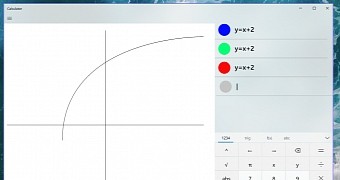Microsoft open-sourced the Windows 10 Calculator earlier this year, and by the looks of things, this has been one of the best decisions the software giant made in a long time.
Because allowing developers to contribute to the project really pays off, as the GitHub project has received tons of feature suggestions, including several that could make the Calculator one of the most advanced of its kind.
As spotted by HTNovo, one of the enhancements proposed for Calculator is a graphing mode, which could significantly improve the way the app handles mathematics.
The GitHub post also indicates that a Graphing Calculator is a top feature request in the Feedback Hub.
“Empower students to learn mathematics by improving conceptual understanding and attitudes towards math by adding graphing support to Windows Calculator targeting grades 8-12 students and teachers (math/physics). With graphing calculator, we can improve learning outcomes of students by increasing engagement and visualization of math equations,” the proposal reads.
Feature still in development
The suggestion calls for support for all US common core math curriculum and a baseline graphic calculator experience in the app. The Windows Calculator should be able to build and interpret functions, understand linear, quadratic, and exponential models, and work with trigonometric functions.
The feature was proposed by Dave Grochocki, a Senior Program Manager at Microsoft, who explained that such a feature could help teach and learn algebra.
“Graphing capabilities in their daily tools are essential for students who are beginning to explore linear algebra as early as 8th grade. Physical graphing calculators can be expensive, software solutions require licenses and configuration by school IT departments, and online solutions are not always an option,” he posted.
Of course, it could take a while until the feature becomes part of the Windows 10 Calculator, but for the time being, open-sourcing the project on GitHub appears to be a clever way to overhaul the app.

 14 DAY TRIAL //
14 DAY TRIAL //